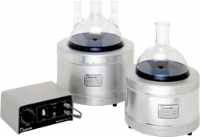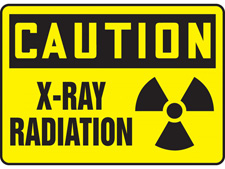 |
 |
| MSDS Topics |
Free Sites | FAQ's | Regulations | Glossary | Software | Suppliers |
| Books | Forum | Poll | Fun stuff | Quiz | Store | |
| MSDS and safety supplies | Search ALL our MSDS info | |||||
 | |||
 |
 |
 |
|
| Title: 01/09/1991 - Applicability of the OSHA Laboratory Standard to laboratories within the electric utility industry | |
| Record Type: Interpretation | Standard Number: 1910.1200, 1910.1450 |
January 9, 1991
Mr. Richard J. Landy
Vice-President
Human Resources & Administration
Entergy Operations, Inc.
P.O. Box 31995
Jackson, Mississippi 39286-1995
Dear Mr. Landy:
This is in response to your letter of October 22, regarding the applicability of Occupational Safety and Health Administration's (OSHA) Laboratory Standard, 29 CFR 1910.1450, to laboratories within the electric utility industry.
The Laboratory Standard applies to all laboratories that use hazardous chemicals in accordance with the definition of "laboratory use" and "laboratory scale." Paragraph (b) of the standard defines the "laboratory use of hazardous chemicals" to include the handling or use of hazardous chemicals where all of the following conditions are met. The conditions that must be met include that multiple chemical procedures or chemicals are used; the procedures involved are not part of a production process, nor in any way simulate a production process, and the chemical manipulations are carried out on a "laboratory scale." The definition of "laboratory scale" specifically excludes those workplaces whose function it is to produce commercial quantities of materials.
The preamble to the standard indicates that most quality control laboratories are not expected to qualify for coverage under the Laboratory Standard, since they are usually adjuncts of production operations which typically perform repetitive procedures for the purpose for assuring reliability of a product or a process.
In your particular case, you stated that you are performing analyses to determine the quality of process water and quality of effluent streams which are discharged to the environment under EPA permits. The Agency has interpreted that laboratory activities pertaining to the production of electricity, such as determination of the quality of the process water, would be considered quality control of a production process; therefore, these activities would not fall within the coverage of the Laboratory Standard. Effluent testing would also be considered quality control of production if the results of the test is used as a source of information for process control adjustment. However, if the effluent testing is performed solely for the purpose of meeting EPA discharge criteria, this type of analyses would be within the scope of the Laboratory Standard.
|
It should be noted that the repetitive nature or standardized procedures are not part of the definition of "laboratory use" or "laboratory scale." These factors are merely discussed in the preamble to the regulation as characteristics frequently found in laboratories. The failure of a facility to fit within the scope and application section of the laboratory standard merely shifts the employer's obligation to protect employees working within the facility from compliance with the Laboratory Standard to compliance with the appropriate general industry standards. Moreover it should be noted that the general duty clause, section 5(a)(1) of the OSH Act, continues to be applicable to all employers and requires each employer to provide employees a place of employment which is free from recognized hazards that may cause death or serious physical harm to employees. |  Heating stirring mantles are just one laboratory accessory you can get from Safety Emporium. |
Sincerely,
Patricia K. Clark, Director
Directorate of Compliance Programs
October 22, 1990
Ms. Patricia K. Clark
Director, Compliance Programs
U.S. Department of Labor, OSHA
200 Constitution Avenue, N.W.
Washington, D.C. 20210
Dear Ms. Clark:
|
On October 16, 1990, a representative from our Waterford-3 Nuclear Steam Electric Station contacted Don Harvey of your department with regard to 29 CFR 1910.1450, "Occupational Exposures to Hazardous Chemicals in Laboratories". The nature of the discussion was the
applicability of the standard to laboratories within the electric utility industry with respect to the development of a Chemical Hygiene Plan. As conveyed to Mr. Harvey, the chemical laboratories at Waterford-3, Grand Gulf Nuclear Station and Arkansas Nuclear One Power Plants are laboratories which perform analyses to determine the quality of process water and quality of effluent streams which are discharged to the environment under EPA permits. These analyses are performed on a repetitive basis, utilizing standardized procedures. |  Get X-ray and radiation safety signs and tapes at Safety Emporium. |
Based on this explanation of our laboratory functions, Mr. Harvey concluded that our laboratories fall under the definition of a "quality control laboratory", as defined in the preamble of the standard. He further concluded that we would be exempted from the requirement to develop a Chemical Hygiene Plan, however, we would fall under the requirements of the OSHA Hazard Communication Standard, 29 CFR 1910.1200.
Following Mr. Harvey's suggestion, we are requesting that you review this interpretation of the standard and respond to us in writing with either your concurrence or non-concurrence on the position of exemption.
Your cooperation in addressing this matter will be deeply appreciated. Please contact John Ayme of my staff (601-984-9722) if you should have any questions.
Very truly yours,
Richard J. Landy
The official, public domain, OSHA version of this document is available at http://www.osha.gov/pls/oshaweb/owadisp.show_document?p_table=INTERPRETATIONS&p_id=20160&p_text_version=FALSE